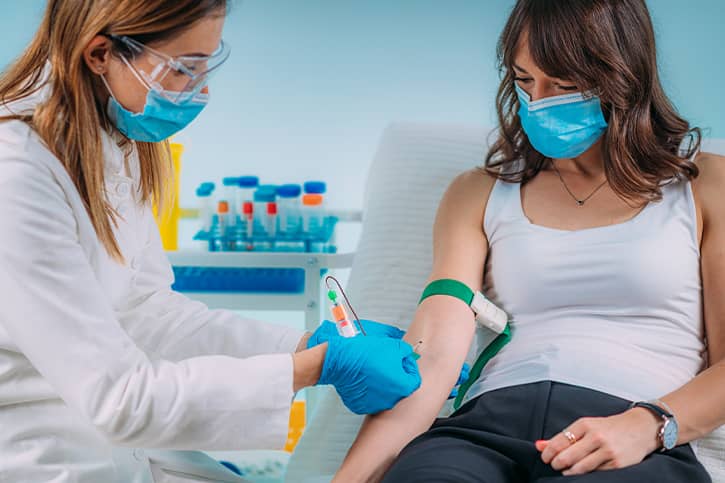Phlebotomy Technician
Our Phlebotomy Technician Program provides hands-on training and comprehensive instruction to prepare students for a successful career in blood collection and laboratory procedures.
Phlebotomy Technician Key
Phlebotomy Technician Program Overview
- 60 hours classroom + 30 hours lab = 90 total training hours
At Vitality Health Training Academy, our Phlebotomy Technician Program is designed to equip students with the skills, confidence, and clinical expertise needed to thrive in today’s fast-paced healthcare environment. Whether you’re starting your career or expanding your healthcare credentials, this program offers comprehensive training in both classroom and hands-on settings.
Phlebotomy Technicians play a vital role in patient care. They are responsible for drawing blood for laboratory testing, transfusions, research, and blood donations. A skilled phlebotomist must be detail-oriented, professional, and compassionate — ensuring patients feel safe and confident during the blood collection process.
Admissions Requirements
To enroll in the Phlebotomy Technician Program at Vitality Health Training Academy, applicants must meet the following criteria:
Be at least 18 years of age
Applicants must be legal adults at the time of enrollment.
High school diploma or GED
Proof of completion is required prior to beginning the course.
Valid government-issued photo ID
Such as a driver’s license, state ID, or passport.
Proof of immunizations or TB test (if required)
This may include updated vaccination records or negative TB test results, depending on state and clinical site requirements.
Completed enrollment application
All forms must be accurately filled out and submitted before the start date.
Legal and ethical considerations in phlebotomy
Explore patient rights, consent, confidentiality, and professional responsibilities within the scope of phlebotomy practice.
Subjects Covered
Anatomy and physiology related to the circulatory system
Understand the structure and function of the circulatory system to safely and accurately perform blood draws.
Proper venipuncture and capillary collection techniques
Learn step-by-step techniques for drawing blood from veins and capillaries using industry-standard tools and methods.
Infection control and safety procedures
Master protocols for maintaining a sterile environment and protecting both patients and healthcare workers from contamination.
Infection control and safety procedures
Master protocols for maintaining a sterile environment and protecting both patients and healthcare workers from contamination.
Legal and ethical considerations in phlebotomy
Explore patient rights, consent, confidentiality, and professional responsibilities within the scope of phlebotomy practice.
Legal and ethical considerations in phlebotomy
Explore patient rights, consent, confidentiality, and professional responsibilities within the scope of phlebotomy practice.
Use and maintenance of lab equipment
Train in the safe and effective use of common laboratory tools and how to maintain them for consistent performance.
Career Outlook
Upon successful completion, graduates will be eligible to sit for the National Phlebotomy Certification Exam and begin working in:
- Hospitals: Annual Salary Estimate: Approximately $41,520
- Diagnostic Laboratories: Annual Salary Estimate: Approximately $49,566
- Physician Offices: Annual Salary Estimate: Approximately $39,800
- Blood Donation Centers: Annual Salary Estimate: Approximately $32,000 – $40,000
- Research Facilities: Annual Salary Estimate: Approximately $40,000 – $51,000
According to the U.S. Bureau of Labor Statistics, employment for phlebotomists is projected to grow 8% from 2023 to 2033, which is faster than the average for all occupations. This steady demand is driven by the continued need for bloodwork in hospitals, labs, and medical offices across the country.

Graduates of phlebotomy programs have strong employment prospects in the healthcare field. For instance, ACI Medical & Dental School reports a 90% employment rate for its phlebotomy graduates!
Graduation Requirements
Maintain a minimum cumulative GPA of 2.0 throughout the program
Successfully pass the final examination, which includes both written and practical components
Complete all required classroom and lab hours (90 total hours)
Demonstrate competency in core phlebotomy skills and safety procedures
Fulfill all attendance requirements as outlined at the beginning of the course
